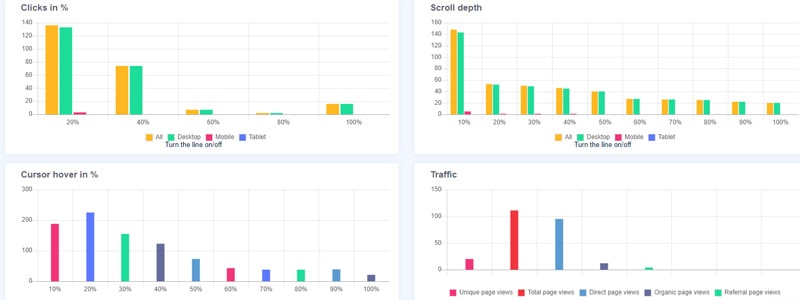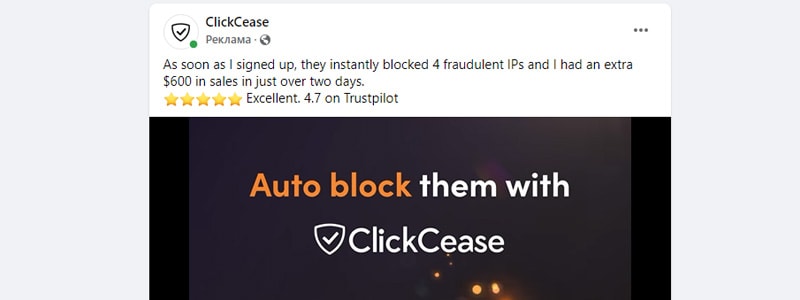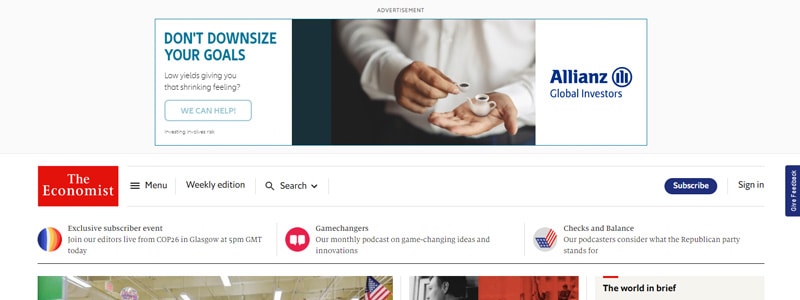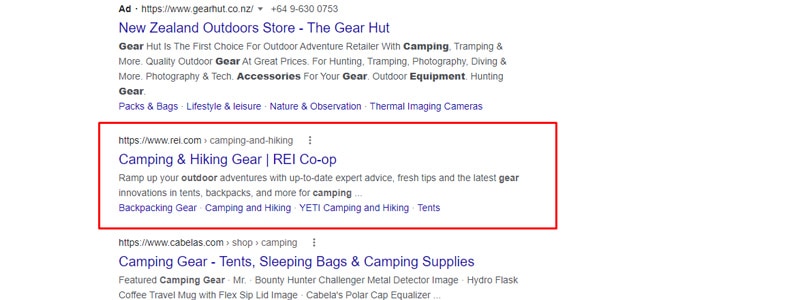To provide the company with performance marketing, four stages should be planned:
- Outline the goal. The task should be specific and understandable, presented in numbers. Then check out the different performance marketing pricing models, which we’ll cover below.
- Select channels that match your purpose and audience. If the audience accepts your presentation method, they will hear your message too.
- Define and prepare content for launch. It can vary depending on the type of platform – blog, media content, or search ads.
- Observe and further adjust the marketing campaign, adjusting it to the modern methods and goals of the company.
Performance marketing is primarily used in e-commerce and is recommended for online stores and retailers. This approach is focused on each seller. Personalization allows you to generate more profit without wasting unnecessary funds on unnecessary advertising.
What Is Performance Marketing?
Performance marketing is a type of online marketing that combines relevant channels and ad serving techniques. It contains the principle by which a client pays for the result of an advertising campaign. This performance metric can be a click, video view, booking, download, or sale. This same performance marketing factor determines the pricing and methods for an ad campaign.
How does performance marketing differ from traditional internet marketing? In the classic version, the marketing company receives payment in advance, without reference to the result. Brands benefit from this, and they are generally good for increasing awareness. Also, the difference attributed to the key features of performance marketing is that it excludes advertising on television and radio – it is almost impossible to determine the percentage of influence there.
A familiar (and annoying) clear example of performance marketing is obsessive advertising in games. Unfortunately, we often see it in other applications. This is a form of download marketing. The company only has financial receipts if the advertised application is downloaded based on the result of viewing.
How does performance marketing work? First, let’s get into the details. It includes four groups:
- Sellers are advertisers or those who are seeking to sell their products.
- Publishers are affiliates who promote the products of vendors. These can be websites with coupons, cashback and reviews, online magazines, etc.
- Social networks and tracking platforms allow you to track and analyze leads, clicks, and conversions.
- Affiliate managers are employees who make sure there is a seamless experience between advertisers and publishers.
Performance marketing is applicable in different areas, such as social networks and search engines, and it can be affiliate or promotional.
Types of Performance Marketing

Performance marketing pays for specific customer action. Accordingly, payment can be made according to a different scheme and with variable principles. Depending on the KPIs, the types and strategies of performance marketing vary. Let’s briefly consider what they are.
Cost per Impression (CPM)
The strategy is also called cost per mille or cost per thousand. Simply put, it is pay-per-view. The client pays for 1,000 displays of their advertisement. This type is suitable for branding – the company constantly appears in the field of view of potential customers, and many people learn about it quickly.
Cost Per Click (CPC)
A flexible strategy in which payment is made for a specific action taken, for example, a click on your ad. A particular action is already taking place here. The cost of a click is higher if the income from it is higher. You can pay for ten clicks, for example. Your ad will be visible until you get the required number of clicks. Like CPM, CPC is a great option for small businesses looking to promote and increase sales. Most of these campaigns are launched on Google Ads.
Cost Per Sales (CPS)
Payment is made only when there is a sale due to advertising. This approach is chosen by small companies that don’t have enormous advertising budgets. For example, small entrepreneurs, research centers selling reviews or books, etc.
Cost Per Leads (CPL)
You pay only if the user, under the influence of advertising, provides you with their information to be contacted in the future.
Cost Per Acquisition (CPA)
In this case, payment is made for any desired action – this is the most utilized indicator of an advertising campaign’s productivity. The goal can be anything – click, watch a video, fill out a questionnaire, or sell.
Performance Marketing Channels
As mentioned above, Performance Marketing is purely internet marketing. And depending on the audience and tasks, tools or web platforms for advertising are selected. So let’s analyze them in a nutshell.
Social Media Advertising

The most popular web resources for advertising are Facebook, Twitter, LinkedIn, Instagram, and Pinterest. Statistically, 72% of the US population uses at least one platform. Thanks to their capabilities, you can track the following indexes:
- Clicks.
- Views.
- Sales.
- Comments.
- Likes.
- Filling out contact forms.
The channel is in demand for CPM advertising.
Social media allows you to tailor the target audience to your industry, which increases the chances of attracting new customers.
Programmatic Display Advertising

Display advertising on the Internet is an echo of traditional television methods but in a modern way. The channel may contain banners, interactive and multimedia advertisements, videos. All this can be called a digital analog of billboards and city lights that can be seen on the streets of cities.
Ads can be tailored to the audience by website type, gadget (mobile or PC), and geographic location.
The variation of advertising is designed for clients who want to get a larger audience. It allows you to inform consumers about discounts, promotions, bonuses, new products or services, as well as about the brand itself.
Native Advertising

Native ads appear to be part of the content and partially imitate it. Invisible advertising does not distract, annoy or disturb consumers. This is not magic – its design and presentation are meticulously thought out and blend in harmoniously with the website’s content on which it is hosted. Such advertising is carefully selected for the hobbies of consumers, generating more interest.
Often, this type of marketing is chosen for CPM.
Search Engine Marketing (SEM)

Search engine advertising is divided into two types:
- SEO. A proven and reliable Performance Marketing tool that relies on search terms, keywords, and search engine algorithms. As a result, websites with high-quality content and high authority are in the first positions. Clients click on these ads first. This is the approach chosen for the CPC.
- PPC. These include paid customer ads at the top of search queries. For them, the CPC payment system is also popular – pay per click. The price is fixed during the auction and is determined by the number of competitors applying for this place.
These models can be optimized in real-time based on customer response.
High Impact Mobile Advertising

Ads for phones or tablets are designed to engage consumers and encourage them to click on or watch a video. Vivid and emotional full-screen videos, interactive elements consistent with the interface, and targeting achieve the goal and attract customers.
Video and CTV
Video ads are embedded in games, videos, films, programs, and series. Viewers can skip them or view them in full. The greatest impact is made by video on the TV screen. Anyway, this is one of the most effective types of on-screen advertising, which is easy to remember – the completion rate is at least 90%.
Performance Marketing Tips
With the advent of performance marketing, the approach to advertising and its perception has changed. So how can you improve your email marketing to make it more effective? There are five tips to help you do this:
- Invest in the early stages of the funnel. Selling is the most expensive and far from the first of them. This is why it is so important to invest in the first interactions with the customer. Then pay close attention to the search steps to have a better chance of personalizing information and reaching more consumers with the least investment.
- Track performance and optimize processes. Identify important KPIs and analyze them, making changes if necessary.
- Study your audience and make your ads relevant. Create content that meets the needs of your audience at each stage of the funnel. HubSpot’s acclaimed product marketer Alex Girard rightly notes: “It’s not a good idea to run sales-oriented advertising when the customer is in the brand exploration phase. As well as vice versa.”
- Determine your goals and the most profitable channels for your investment. Then, based on the advertising campaign’s objectives, select the types of tools for performance marketing. As an example, in some cases, it makes no sense to pay for clicks since this does not bring actual dividends in the end. But, conversely, if your goal is to sell, there is no need to bet on clicks.
- Focus on quality keyword usage. This is the foundation of an e-commerce strategy. After examining the customers, you will build keywords according to their needs, requests, and needs. Then create unique content for your niche.
When used correctly, performance marketing can help you increase your reach and sales with less risk.
Output
Performance marketing continues to be popular and demonstrates several advantages:
- Popularization of the brand through third partners among their audience. As a result, the market is expanding.
- It’s easy to track and measure.
- Risks are reduced. CPA is significantly lower, while ROI is higher.
By introducing performance marketing into your campaign, you can invest in promoting, developing, and testing new products.
